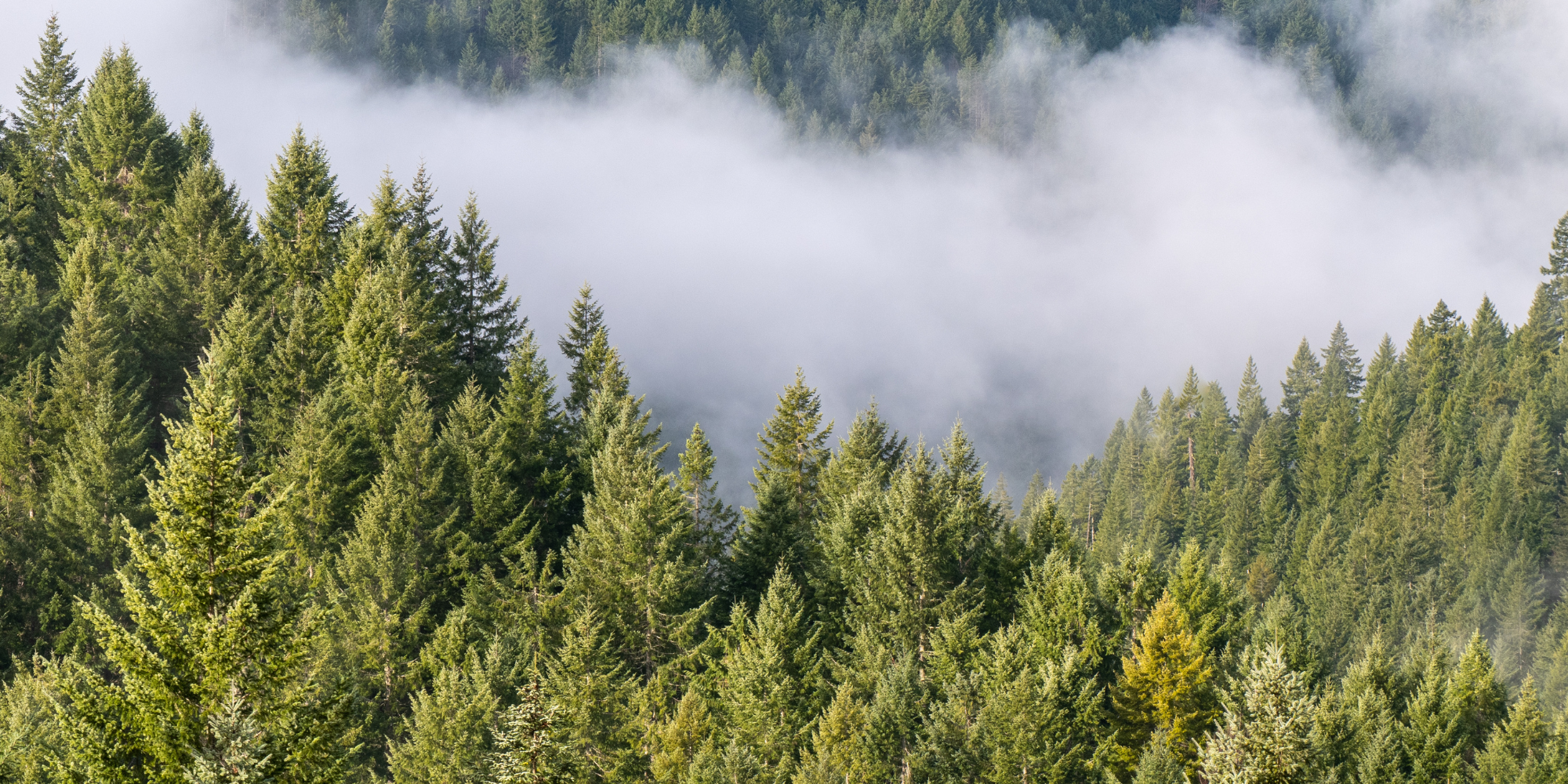
Private Forests
Oregon is home to over 10 million acres of forests privately owned by corporations or individuals - ranging from small forestland owners with 10-acre plots in their backyards to giant investment companies that own hundreds of thousands of acres all over the state.
Private forestlands in Oregon are managed according to the Oregon Forest Practices Act (OFPA) first adopted in 1971. The OFPA sets guidelines for harvesting (logging), reforestation, road construction and maintenance, slash disposal, chemical use, and stream, lake, and wetland protection.
For years, forest protection laws in Oregon were generally considered significantly weaker than in California and Washington, but things are changing with the Private Forest Accord. This comprehensive set of new rules (fully in effect for all forest landowners starting January 1, 2024) upgrades protections for stream buffers, road building and maintenance, and steep slope logging - all with an eye toward better-safeguarding habitat for at-risk aquatic species like coho salmon and torrent salamanders.
Key upgrades from the Private Forest Accord:
Expanding no-cut buffers on fish streams from a minimum of 20 feet to 110 feet
First-ever protections in Oregon for non-fish streams critical to regulating water temperature
A 20-year plan for upgrading all roads on industrial forest lands to avoid sediment that harms aquatic life from infiltrating rivers
First-ever protections to limit harmful landslides triggered by steep slope logging from damaging fish habitat in streams
For most industrial forestland owners, abundant clear-cutting and short logging rotations are the norm. Turning native forests into industrial tree farms has created dense plantations that pose high fire risks and provide little or no habitat for at-risk terrestrial species. This management style also relies on the excessive use of herbicides and other chemicals that put human and ecological health at risk.
Notification and Public Process
Private landowners are required to inform the state of intended logging plans but they are not required to notify neighbors. However, the state’s FERNS (Forest Activity Electronic Reporting and Notification System) database allows anyone to sign up and get information about planned logging, aerial spray, road building, and more. So, if you want to know what is happening in a forest near your home or a particular part of Oregon’s forested landscape that means a lot to you, the FERNS system is how you find out.
Find out more about FERNS and sign up here.
Thanks to a law passed in 2020, FERNS also now allows neighboring landowners to get even more specific and timely information about aerial spray operations in their area.
More details about the rules under the Oregon Forest Practices Act
-
Logging on private lands is expected to be consistent with the state and local use requirements under the Forest Practices Act. The commercial growing and logging of trees on private land includes minimum regulations for timber harvesting, road construction and maintenance, slash treatment, reforestation and pesticide and fertilizer use.
For a single landowner, clear-cuts are allowed up to 120 acres in size. The clear-cut parcel must be buffered by at least 300 feet on a single landowner’s property or until replanted trees have grown for 4 years or are 4 feet tall. The selling or trading of property often circumvents the 300 foot buffer requirement—a loophole that aids private landowners in maximizing the total amount of land available to be clear-cut.
-
Despite the damage done to public resources like water, fish, and wildlife by practices on private land, timber industry owners pay little in way of taxes to the State.
Until the late 1990s, private timberland owners all paid a forest severance tax, which generated revenue for county and state governments to use on public services. In 1999, the Oregon Legislature eliminated this tax on private timber owners with more than 5,000 acres of land, resulting in a drop in state revenue of $70 million a year.
Today, the primary tax paid by large industrial forest owners is the Forest Harvest Tax. Funds generated from this tax funds firefighting efforts through the Oregon Department of Forestry (ODF) and the Oregon Forest Resources Institute (OFRI) - a quasi-government agency with a mission to promote the logging industry in Oregon. Forest Harvest Tax funds do not go to county or state governments to fund services.
-
Landowners must comply with the Forest Practices Act road standards. Written approval from ODF is required prior to road construction if the plan is in or near riparian areas, stream crossings, or high landslide areas. Approval is also required for placing logs or boulders in stream channels for stream enhancement.
-
There is no language in the state ESA that requires an owner or any commercial forestland or other private land to take action to protect a threatened or endangered species or to impose additional requirements or restrictions on the use of private land.
Only a 70-acre no-cut area is required for known northern spotted owl sites, though owls’ home range typically include over a 1,000 acres of habitat around their nest.
-
Aerial spraying of herbicides is common. It is difficult to prevent chemicals from drifting onto water-bodies. Plans and compliance with other state laws are required. SB 1602, passed in 2020, upgraded required aerial spray buffers for streams, homes, schools, and water intakes. These rules require the following:
300-foot buffer around homes
300-foot buffer around schools
300-foot buffer around qualifying water intakes
110-foot buffer around almost all fish-bearing streams
75-foot buffer around drinking water streams (most drinking water streams are likely to be fish streams)
50-75 foot buffer on non-fish bearing streams
-
Checks and citations are based on reports of violation only. State budgets for enforcement inspection have been severely reduced in recent years.


